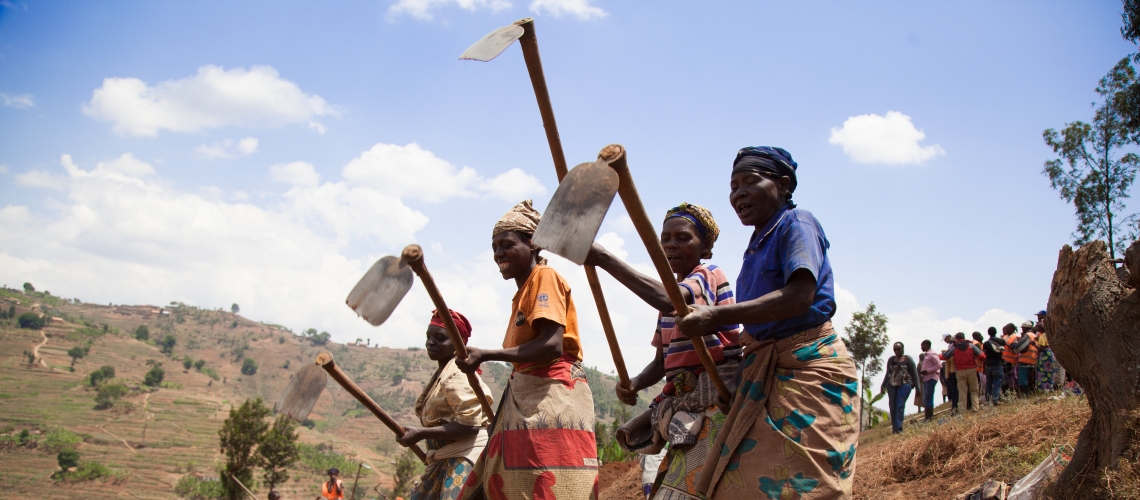The impact of COVID-19 has been devastating around the world. In response, countries have put in place emergency measures to help their citizens and private firms weather the pandemic and recovery programs to boost the economy once the lockdown restrictions can ease.
Most developing economies do not have the fiscal space to implement broad recovery programs, as the revenues from key economic sectors have collapsed, expenditures to respond to the pandemic have escalated rapidly, and capital outflows have increased.
Development institutions are setting up platforms to support countries. The World Bank’s approach paper, “Saving Lives, Scaling-up Impact and Getting Back on Track,” underlines the need to rebuild better. This approach focuses on achieving a resilient, inclusive and sustainable recovery in a world transformed by the coronavirus. Similar approaches have been put in place by the IMF, IDB, ADB, and other development partners.
As several developing countries begin to put in place economic recovery programs, many of them focus on infrastructure, natural resources, and productive sectors, with strong emphasis on job creation. One area often overlooked is the strengthening of land and property markets.
Unfortunately, most of the poor around the world do not have legally registered property rights. Globally, only about 30% of the population have registered property rights, and in Africa this number is less than 10%. The poor do not enjoy security of tenure, and they can’t use land titles to borrow from banks to invest in agriculture, improve their dwellings, open a new business, or expand an existing one.
Research has shown that secure property rights and effective land and property markets are cornerstones of an efficient, productive economy. Property rights give confidence to invest in land, allow private companies to borrow—using land as a collateral—to expand job opportunities, and enable governments to collect property taxes. This is an important source of revenue.
Land and property markets are indispensable for an economic recovery, and if designed well, they are also directly linked to the pillars of an inclusive, sustainable, and resilient recovery.
Well-designed land administration programs should be inclusive. The “Stand For Her Land” campaign has drawn attention to the critical issue of women’s land rights. The World Bank recently published a gender strategy that emphasized access to assets, including land and property, is fundamental for women’s empowerment. Secure land rights grant women opportunity and status. In addition, the recognition of indigenous peoples’ land rights is critical to protect their ancestral lands and to continue managing them sustainably for local and global environmental benefits.
Clear land and property rights are indispensable for sustainability and the fight against climate change, as the Intergovernmental Panel on Climate Change (IPCC) outlines in their Climate Change and Land report. The linkage between insecure property rights and deforestation is clear and strong.
A well-functioning land and property registration system strengthens the resilience of communities and countries. Inadequate land tenure, availability, and planning are key reasons why new urban citizens are often located in high-risk zones. Up-to-date and spatially accurate cadaster records are important for disaster risk modeling, planning, and evacuation. And when a disaster strikes, secure land records protect the rights to the most valuable asset of the poor.
In a post COVID-19 world, a government’s financial resources to implement an agile and effective land administration program will be limited. One option is to partner with the private sector in select functions of land administration such as cadastre mapping, automation, and e-services. Many countries like Canada, Australia, Malaysia have introduced these arrangements.
At a time of urgency, speed is of the essence. That’s why new digital technologies also have an important role to play. Technologies such as drone mapping, 3D cadastres, and blockchain will help speed up implementation of cadastre mapping, more transparent land and property registration systems, and improved services for citizens.
A land and property rights program as part of a post-pandemic recovery platform should also include better management of state land and assets. Putting in place an effective system of managing state land could generate urgently needed funding to accelerate the recovery. Governments could also tap unused or underutilized state land to promote investment by increasing supply of land for investment, such as industrial parks, housing, or building major infrastructure as part of the recovery process.
Finally, we should not forget the potential impacts of COVID-19 on land tenure. While detailed evidence is not yet available and may take time to manifest fully, governments need to pay attention to mitigate them before the negative consequences are irreversible. For example, there may be more distressed sales of property and land or evictions as a result of job loss or the need for quick cash to care for sick family members. Evidence suggests women bear a disproportionate burden as they may lose their rights to land and property with the death of a male property owner in the family, as in many countries women are often not included on the property title.
Land administration should be considered as part of post-COVID recovery programs. Not only can the economic benefits be enormous, but it’s an important part of making the recovery inclusive, sustainable and resilient. Countries cannot lose the opportunity to leverage land for their rapid sustainable recovery.
This blog was originally posted as part of the World Bank's Sustainable Cities Blog Series and is posted here at the request of the author.

